Now that they’re distinguished, grown ladies at 2 years of age, Matilda and Cow have settled into a predictable rhythm. Every playtime, mealtime, and walk, I feel as though we’re in sync, and my dogs typically do what I ask of them.
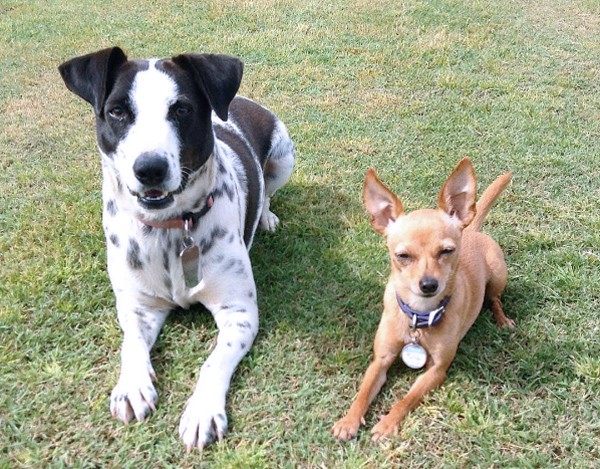
Matilda and Cow. (Photo by Lindsay Pevny)
I remember a time when they weren’t so agreeable. During the first few weeks, we were just getting to know one another. After a few months, I had taught them a few things, but sometimes they just seemed to not want to listen.
Matilda became more difficult to walk on a leash. She had grown obsessive about marking her territory and lifted her leg to pee every few steps. Cow become very distrustful of Matilda around her food bowl and almost attacked her over treats.
We managed to get through that difficult period with lots of patience and positive reinforcement. It was well worth the wait. Matilda can now walk politely by my side without pulling to mark everything, and Cow doesn’t bat an eye when Matilda is close to her food (though I still avoid letting them enjoy long-lasting treats together).
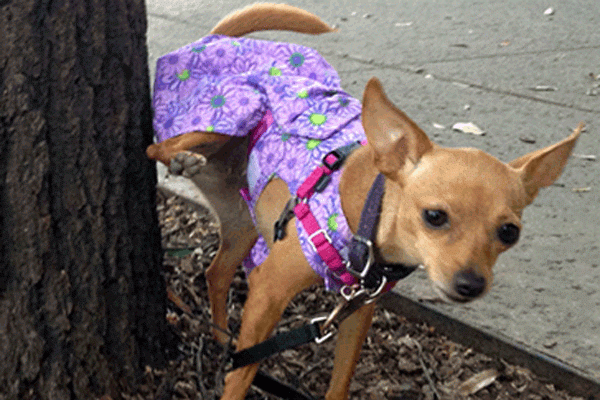
Matilda marking. (Photo by Lindsay Pevny)
I’d heard rumors of a doggy teenage-rebellion stage. As it turns out, a study on animals surrendered to shelters showed that almost half of relinquished dogs were between 5 months and 3 years of age.
I wanted to learn more about this difficult stage to help more “teen” dogs keep their homes, so I spoke to certified dog-trainer Betsy Calkins, CPDT-KA, from The Educated Dog Learning Center for her professional insight.
“I wouldn’t characterize it as rebellion,” she prefaced. “Dogs don’t intentionally rebel against their owners. But they can be easily distracted by their environment and don’t always seem to be listening due to hormones and shifting interests — for example, the desire to find a mate.”
It was refreshing to hear that my dogs wouldn’t ignore me on purpose.
Calkins noted that, while every dog is different, the adolescent stage usually appears in small dogs around 6 months, while larger dogs become “teens” at 7 to 9 months of age.
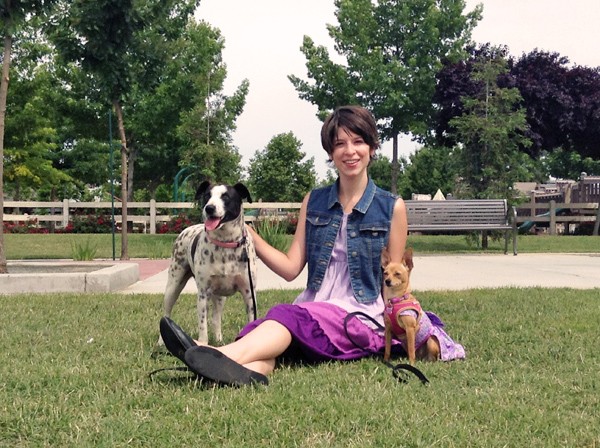
Enjoying the park — by listening to me. (Photo courtesy Lindsay Pevny)
Getting your teen dog to listen again
I asked how teen dogs could be convinced to refocus on their training.
“Be more interesting than your environment!” she advised. “When your dog is distracted, it means you must work harder to engage your dog in play. Older styles of training are about forcing compliance. In modern training, we now want to be interesting and fun so our dogs actually want to listen. Dogs love new experiences, so find appropriate, playful ways to keep them engaged.”
I pondered aloud if I could ever possibly be more interesting than a grassy area full of fun smells.
“It’s important to find what your dog loves,” she said. “If they love smelling, use a sniffing game.”
She referred me to a game called Sprinkles, coined by trainer and dog-games pro Sally Hopkins. When Matilda and Cow return their attention to me, I reward them by scattering small treats like shredded Parmesan cheese in the grass for them to find.
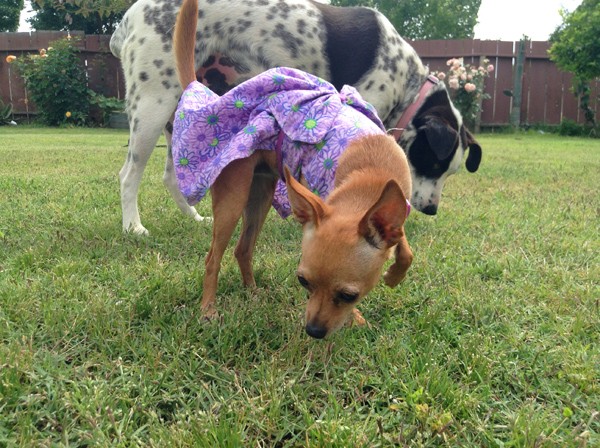
Playing the Sprinkles game. (Photo by Lindsay Pevny)
Instead of blaming the dog for not listening, we should understand their point of view and work with their instincts and desires, not against them.
What’s happening to my teen dog?
If she has not been spayed, a female dog between the ages of 6 and 9 months is preparing for, and will soon start, her first heat. She may begin escaping your yard to roam. She can become more playful around male dogs yet more aggressive toward fellow females (which explains why Matilda and Cow had a harder time getting along at that age).
A male dog also may roam more often and will begin to lift his leg to mark his territory. He’ll be able to pick up the scent of a female in heat from up to 3 miles away.
Teenage dogs also become more confident. While your dog may have been timid as a puppy, rarely straying from your side, they may start to explore as they gains confidence and independence. You may need to retrain your adolescent dog’s recall, using a long line or leash instead of giving them the opportunity to run off.
Temptations such as chewy shoes, open doors, and unattended meals can be impossible for your teen dog to ignore. Until you’re sure they understand and respect your rules and boundaries, you will need to manage their environment to keep your dog and your belongings safe. Crate training gives your mischievous pup a safe place to stay out of trouble.
Spaying or neutering dogs while they are puppies can prevent some hormone-induced behavior problems, but will not eliminate them. Remember to be patient with your “rebellious teen” dogs. They’re still puppies, after all.
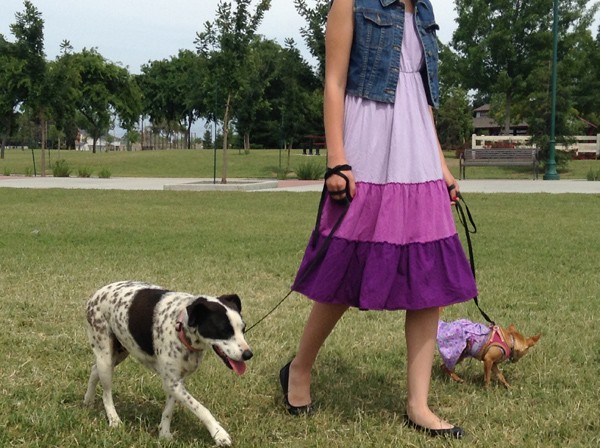
Walking like little angels! (Photo courtesy Lindsay Pevny)
It’s unnecessary to use pain or fear in your training, even if your dog seems to be stubborn. While it’s sometimes harder for your teen dog to listen to you, they don’t mean to make you mad. Go back to basics, remind your pup of their manners, and stay positive to keep training fun.
The post How to Deal With Doggy Teenage Rebellion appeared first on Dogster.
No comments:
Post a Comment